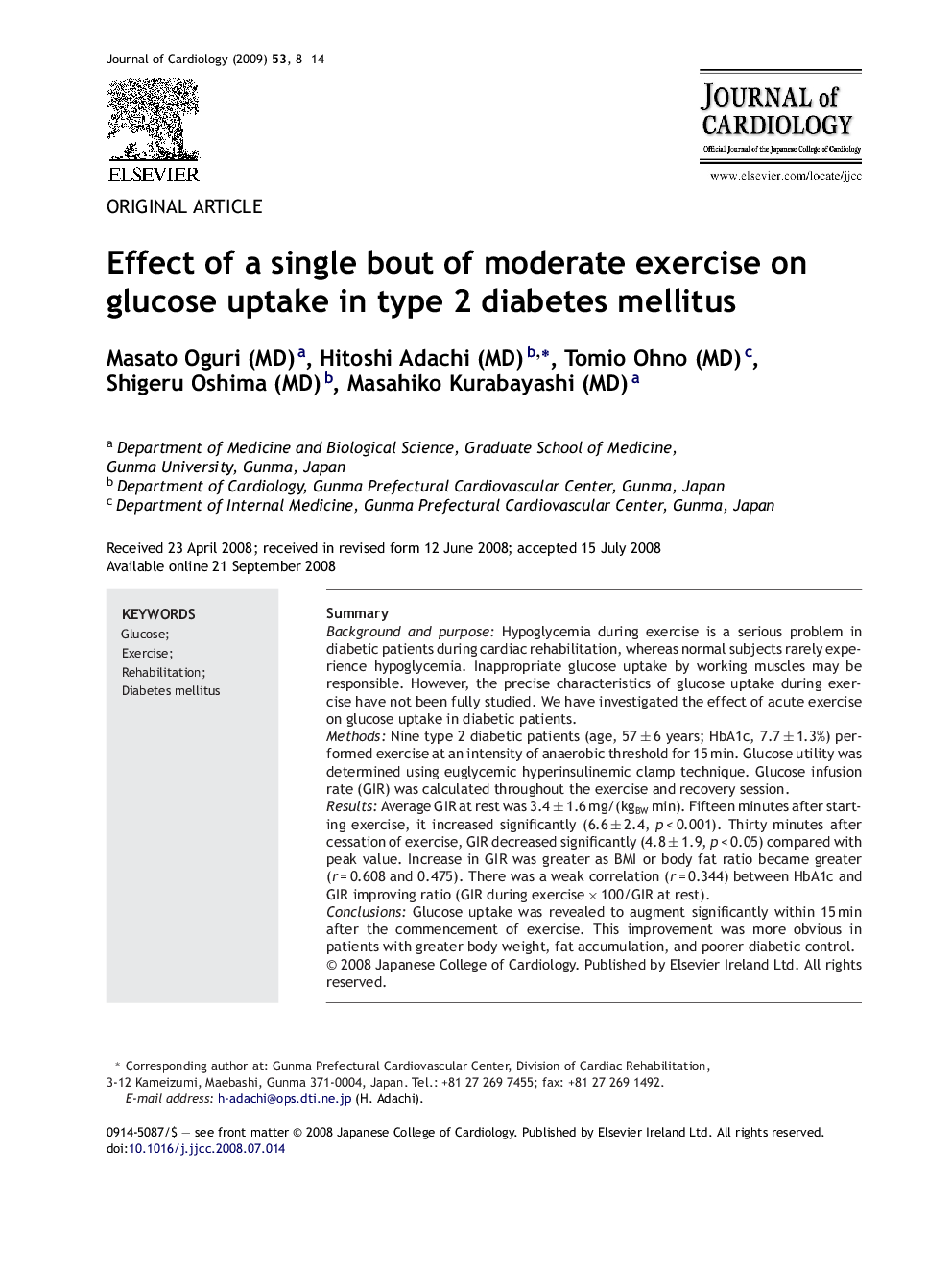| Article ID | Journal | Published Year | Pages | File Type |
|---|---|---|---|---|
| 2963776 | Journal of Cardiology | 2009 | 7 Pages |
SummaryBackground and purposeHypoglycemia during exercise is a serious problem in diabetic patients during cardiac rehabilitation, whereas normal subjects rarely experience hypoglycemia. Inappropriate glucose uptake by working muscles may be responsible. However, the precise characteristics of glucose uptake during exercise have not been fully studied. We have investigated the effect of acute exercise on glucose uptake in diabetic patients.MethodsNine type 2 diabetic patients (age, 57 ± 6 years; HbA1c, 7.7 ± 1.3%) performed exercise at an intensity of anaerobic threshold for 15 min. Glucose utility was determined using euglycemic hyperinsulinemic clamp technique. Glucose infusion rate (GIR) was calculated throughout the exercise and recovery session.ResultsAverage GIR at rest was 3.4 ± 1.6 mg/(kgBW min). Fifteen minutes after starting exercise, it increased significantly (6.6 ± 2.4, p < 0.001). Thirty minutes after cessation of exercise, GIR decreased significantly (4.8 ± 1.9, p < 0.05) compared with peak value. Increase in GIR was greater as BMI or body fat ratio became greater (r = 0.608 and 0.475). There was a weak correlation (r = 0.344) between HbA1c and GIR improving ratio (GIR during exercise × 100/GIR at rest).ConclusionsGlucose uptake was revealed to augment significantly within 15 min after the commencement of exercise. This improvement was more obvious in patients with greater body weight, fat accumulation, and poorer diabetic control.
